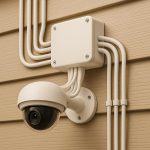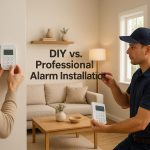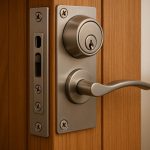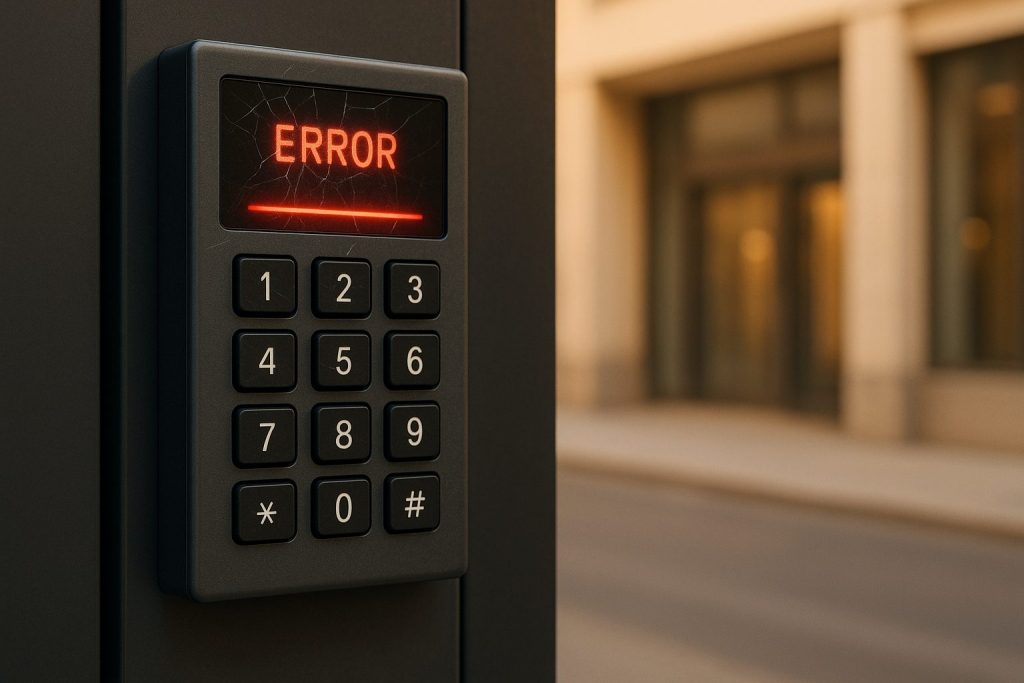If your remote access control system is acting up, it could be putting your property at risk. Here are the key signs to watch for and why addressing them promptly matters:
- Unresponsive Devices: Keypads, card readers, or fobs not working consistently, or door strikes failing to unlock, signal hardware issues.
- Access Log Errors: Missing, duplicate, or incorrect entries in access logs may indicate database or communication problems.
- False Alarms: Frequent or delayed alerts, or contradictory notifications, often point to sensor or software malfunctions.
Ignoring these warning signs can lead to bigger problems, like security breaches or costly repairs. Start with basic troubleshooting – check power, connections, and update software. For complex issues, professional help may be necessary to restore functionality and ensure long-term reliability.
How to Troubleshoot Access Control Prox Reader Setup Issues
Warning Signs Your Remote Access Control Needs Repair
Spotting early issues with your remote access control system can save you from security risks and expensive fixes. These problems often start small but can quickly grow, putting your property’s safety at risk. Here are some key indicators that your system may need immediate attention.
Devices or Keypads That Don’t Respond
One of the clearest signs of trouble is when keypads or devices stop responding. If your keypad becomes unresponsive, buttons don’t work consistently, or the backlight flickers, it’s usually a hardware issue. For instance, pressing a button and getting no response or seeing a blank screen are red flags that shouldn’t be ignored.
Wireless components with dead batteries can also cause headaches. You might notice key fobs only work at very short distances or fail unpredictably – fine one moment, unresponsive the next. Similarly, card readers may beep or fail to light up when a card is presented, signaling a problem.
Another common issue is with door strikes that seem to work but don’t actually unlock. You may hear a click, but the door stays locked, giving the false impression that everything is functioning properly.
Extreme temperatures can also affect how these devices respond, sometimes causing sluggishness or partial failures before they stop working altogether. If you notice these problems, it’s worth checking your system’s access logs for any unusual activity that might point to deeper issues.
Missing or Wrong Access Records
Beyond hardware malfunctions, data inconsistencies in your access logs can be a serious problem. For example, if someone badges in but their entry doesn’t appear in your management software, or if timestamps show impossible scenarios – like a daytime employee entering at 3:00 AM – your system’s database or communication processes may be compromised.
Other signs include duplicate entries, where the same person appears to badge in multiple times within seconds, even though they only did so once. Even more concerning are ghost entries, where deactivated cards or codes show up in the logs, indicating your system isn’t properly updating or syncing with all access points.
These inconsistencies can create a nightmare when investigating security incidents or trying to determine who’s in the building. Time synchronization errors across entry points can also disrupt your system. For instance, if someone is logged entering the front door at 9:15 AM but the elevator records show them on the third floor at 9:10 AM, it’s clear your system’s internal clocks are out of sync.
Too Many False Alarms or Wrong Access Alerts
Frequent false alarms or incorrect access notifications are another warning sign. If your system regularly reports forced door openings that didn’t happen or unauthorized access during business hours, it might be struggling with sensor calibration or software logic.
Phantom intrusion alerts – those that occur at the same time every day – often result from environmental factors like heating systems cycling on, nearby construction vibrations, or even changes in air pressure. These can trigger overly sensitive sensors, causing unnecessary alerts.
You might also notice contradictory alerts, such as receiving notifications that a door is both secured and experiencing an unauthorized access attempt at the same time. This points to communication failures or hardware conflicts within the system.
Lastly, alert timing issues can indicate system degradation. For example, legitimate access attempts might trigger delayed unauthorized entry warnings, or the system might fail to clear alarms even after proper authentication. If alerts are arriving minutes after events occur, your system’s ability to monitor in real-time is likely compromised.
How to Find Remote Access Control Problems
Once you’ve spotted the warning signs of access control issues, it’s time to dig deeper and identify the root cause. By troubleshooting your system step by step, you can uncover and address the underlying problems effectively.
Check Power and Connections
Power problems are a common culprit behind system failures, whether complete or intermittent. If access points aren’t responding, start by inspecting the main power supply to ensure it’s delivering the correct output.
For backup power sources, test the UPS by temporarily disconnecting the main power to confirm it kicks in as expected. If you’re using wireless devices like key fobs or card readers, check their battery levels. A weak battery might cause devices to only work at very close range, signaling it’s time for a replacement.
Network connectivity is another potential issue. Delayed responses or lost communication with the central server often point to problems with network cables or wireless connections. Inspect cables for damage or loose connections, and check switches or wireless access points for any signs of malfunction.
Check Software and Firmware Updates
Outdated software or firmware can lead to unexpected glitches and compatibility problems. Verify that your management software is running the latest version by comparing it with the manufacturer’s release notes. This ensures it works smoothly with your current network equipment and operating systems.
Unupdated software can also cause database synchronization issues, which might show up as inconsistent access logs or delayed entry records. Enable automatic updates if possible, and review any pending updates to make sure they’re installed correctly.
Once you’ve confirmed the software is up to date, move on to testing the hardware and sensors for potential issues.
Test Hardware and Sensors
Next, focus on the physical components of your system. Start by testing door readers with a credential you know works. If the reader responds sluggishly or shows error codes, take note of the specific issues.
Manually inspect door hardware like electric strikes and magnetic locks. Ensure they engage and release properly, and listen for the usual click or buzz that signals normal operation. If locks activate but fail to unlock the door, the problem might be mechanical rather than electronic.
While testing, review system logs to monitor how components communicate during access attempts. Look for error messages or timeout warnings that could point to a specific hardware issue. These logs can be invaluable in narrowing down the problem.
sbb-itb-643e28e
How to Fix Remote Access Control System Problems
Addressing issues with a remote access control system requires careful diagnosis and precise solutions. Once you’ve identified the problem, you can apply targeted repairs to restore functionality. Below are some practical fixes for common problems.
Replace Broken Parts
When hardware components fail, replacing them is often the quickest and most effective solution. Start by addressing the most obvious issues. For example, if a card reader is displaying error codes or not lighting up, replacing the unit can often resolve the problem immediately.
Door hardware, such as electric strikes and magnetic locks, has a limited lifespan, especially in high-traffic areas. A magnetic lock that’s been in use for over five years may begin to fail intermittently. When replacing these parts, ensure the new components are compatible with your system’s power supply – most commercial systems run on either 12V or 24V DC.
Wiring issues can also cause connectivity problems. Damaged cables between the control panel and door hardware are common culprits. If you need to replace wiring, use shielded data cables and proper power wiring. For outdoor installations, weatherproof connectors are essential to prevent moisture-related failures that could occur down the line.
Remote transmitters and key fobs typically have a battery life of 2–3 years, but extreme temperatures can shorten this lifespan. If you notice reduced range, it’s time to replace the batteries.
Update System Software and Firmware
Keeping your system’s software and firmware up to date is crucial for eliminating bugs and closing security vulnerabilities. Many modern access control systems include automatic update features, but it’s best to schedule updates during off-peak hours to minimize disruptions.
Before updating, back up your system’s configuration, including user databases, access schedules, and settings. This ensures you can quickly restore functionality if the update causes unexpected issues.
Firmware updates for devices like card readers and control panels can improve communication and reliability. Check manufacturer websites regularly – quarterly is a good rule of thumb – for new firmware releases that address known issues.
If access logs are displaying errors or user credentials stop working, database corruption may be the cause. Most access control software includes database repair tools to fix corrupted files and restore normal operation. Run these tools during non-business hours to avoid disrupting daily activities.
Professional Repair Services
For more complex issues, professional repair services may be necessary. Specialized tools and expertise are often required to address advanced problems.
Sherlock’s Locksmith, based in Pittsburgh, PA, offers a full range of access control repair services. Their certified technicians can handle everything from simple part replacements to complete system overhauls. With mobile service capabilities, they can often complete repairs on-site without removing equipment from your facility.
Professional services are especially valuable for integrated systems that combine access control with video surveillance, alarms, or building automation. They’re also critical in emergency situations, such as total system failures that leave your property unsecured. Sherlock’s Locksmith provides 24/7 emergency support to quickly restore security while permanent repairs are arranged.
When deciding between DIY repairs and hiring a professional, consider the cost of downtime and the potential security risks. A malfunctioning access control system can disrupt operations and compromise safety, making professional intervention a smart investment for critical applications.
Keep Your Remote Access Control System Working Long-Term
To ensure your remote access control system remains reliable over time, proactive maintenance is key. By addressing potential problems early, you can protect your investment and maintain the security of your property.
Do Regular System Checks
Routine system checks are essential to catch issues before they escalate. Start by inspecting entry points and reviewing event logs. Walk through each access point, confirm that card readers are functioning correctly, and verify that access logs are accurately recording entries.
Pay attention to warning signs like repeated failed access attempts, communication errors between devices, or incorrect timestamps in your logs. These could signal underlying problems that, if left unchecked, might lead to a complete system failure.
Don’t forget to check battery levels on all wireless devices. While most systems display battery status in the management software, doing a physical check ensures accuracy. Replace batteries as soon as they show signs of low power – don’t wait for them to die completely.
For outdoor devices, inspect for weather-related wear or loose connections. Indoor equipment isn’t immune to problems either; dust buildup in control panels can cause overheating and damage components.
Keep Software and Firmware Current
Keeping your system’s software and firmware up to date is another critical step in maintaining long-term functionality. Updates often address bugs and security vulnerabilities, so schedule them during off-peak hours to minimize disruptions.
Always back up your system settings before performing updates, and store these backups in multiple locations. This precaution allows for a quick recovery if an update causes unexpected issues.
Firmware updates for devices like card readers, control panels, and door hardware can improve communication between components and reduce false alarms. Make it a habit to check for updates at least quarterly, and maintain detailed records of version numbers and installation dates. Staying current ensures your system operates smoothly and sets the stage for effective professional maintenance.
Schedule Professional Maintenance
Even with regular checks and updates, professional maintenance is invaluable for identifying issues that might go unnoticed during routine inspections.
Sherlock’s Locksmith, based in Pittsburgh, PA, offers specialized maintenance services for access control systems. Their certified technicians use advanced diagnostic tools to evaluate system performance, verify security settings, and pinpoint potential issues. During service visits, they clean control panels, secure connections, and update system documentation, ensuring everything runs efficiently.
As your system ages, professional maintenance becomes even more important. Skilled technicians can recommend upgrades and help you plan for eventual system replacement. Establishing a relationship with a trusted provider like Sherlock’s Locksmith also means faster response times when unexpected problems arise. Their 24/7 emergency services can quickly restore basic security while permanent fixes are arranged.
For businesses that rely heavily on access control systems, maintenance contracts can be a smart investment. These contracts often include periodic inspections, priority service, and discounted repair rates, offering predictable costs and dependable service to keep your system running smoothly day in and day out.
Conclusion: Keep Your Remote Access Control System Safe and Working
Ignoring warning signs like unresponsive keypads, missing logs, or false alarms can put your property’s security at serious risk. What might seem like minor glitches can quickly spiral into complete system failures, leaving your property vulnerable.
When you notice these issues, start with basic troubleshooting. Check the power supply, update the software, and test the hardware. Problems like loose wiring, outdated firmware, or dirty sensors might be the culprits. In some cases, part replacements or professional repairs may be necessary to get things back on track.
Routine maintenance is your best defense against expensive emergencies. Regular inspections, timely updates, and professional servicing can keep your system running smoothly for years. A well-maintained access control system not only secures your property but also minimizes unexpected downtime. The peace of mind it provides is well worth the effort.
FAQs
What can I do if my remote access control system keeps triggering false alarms?
If your remote access control system is prone to false alarms, it’s worth investigating a few common culprits. Start by considering factors like extreme temperatures, physical obstructions, or even user mistakes. System malfunctions can also be a contributing factor. To address these issues, make sure your system’s software is updated, keep the sensors clean, and check that everything is properly calibrated.
It’s also a good idea to provide basic training for everyone using the system. Teaching users how to operate it correctly can significantly reduce errors. However, if the problem continues, it might be time to call in a professional. A certified locksmith, such as those at Sherlock’s Locksmith, can take a closer look, recalibrate the system if needed, and ensure it’s running smoothly. Regular maintenance is a simple yet effective way to avoid these headaches in the future.
How can I tell if my access control system issues are caused by software or hardware problems?
When diagnosing whether your access control system’s troubles stem from software or hardware, it’s essential to start by observing the symptoms. Software-related issues often show up as login errors, system glitches, or difficulties in updating user permissions. These problems can usually be fixed with straightforward steps like restarting the system, updating the software, or tweaking configuration settings.
In contrast, hardware issues typically involve physical failures, such as a malfunctioning card reader, power disruptions, or connectivity problems. Addressing these might require inspecting the hardware, repairing it, or even replacing faulty components.
To tackle the problem effectively, follow a methodical troubleshooting process. Test the hardware separately and assess the software’s functionality to narrow down the source of the issue. If the problem persists or feels too complex, reaching out to a reliable locksmith service like Sherlock’s Locksmith can ensure your system is repaired promptly and efficiently.
How do I know when my remote access control system needs professional repair?
If your remote access control system starts acting up – say, it’s not responding to authorized users, working inconsistently, or showing physical damage to parts like keypads or card readers – it’s a clear sign to bring in a professional. Ignoring these issues could leave your security vulnerable and potentially make things worse over time.
On top of that, if your system feels outdated or troubleshooting just isn’t cutting it, a professional can evaluate whether it’s time for repairs or an upgrade. Certified technicians have the expertise to get your system back on track, ensuring it operates smoothly and aligns with current security standards.









